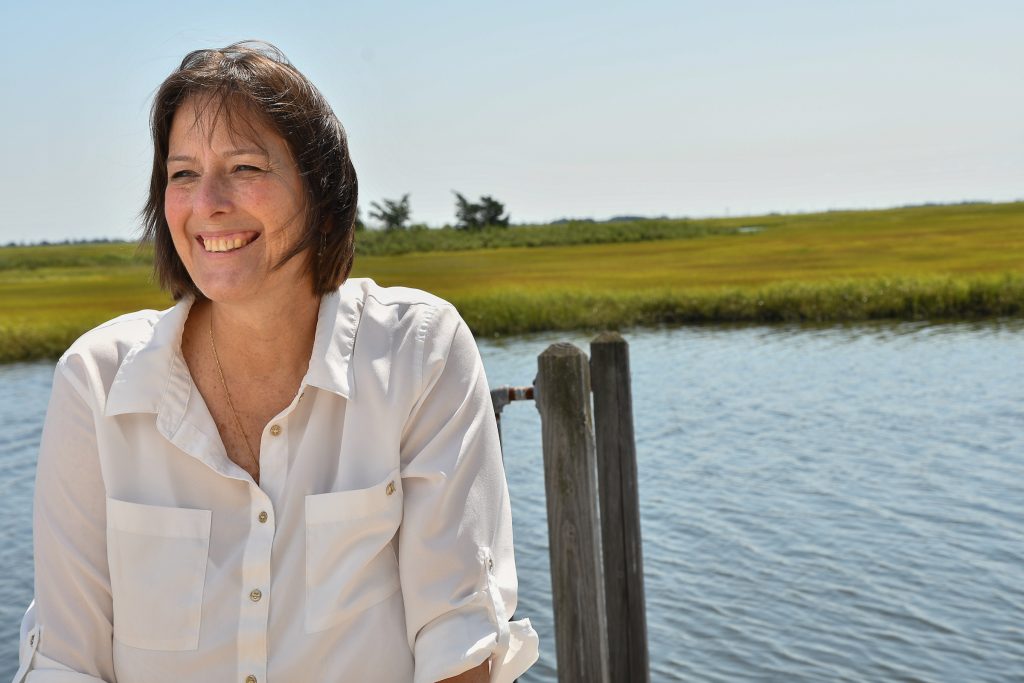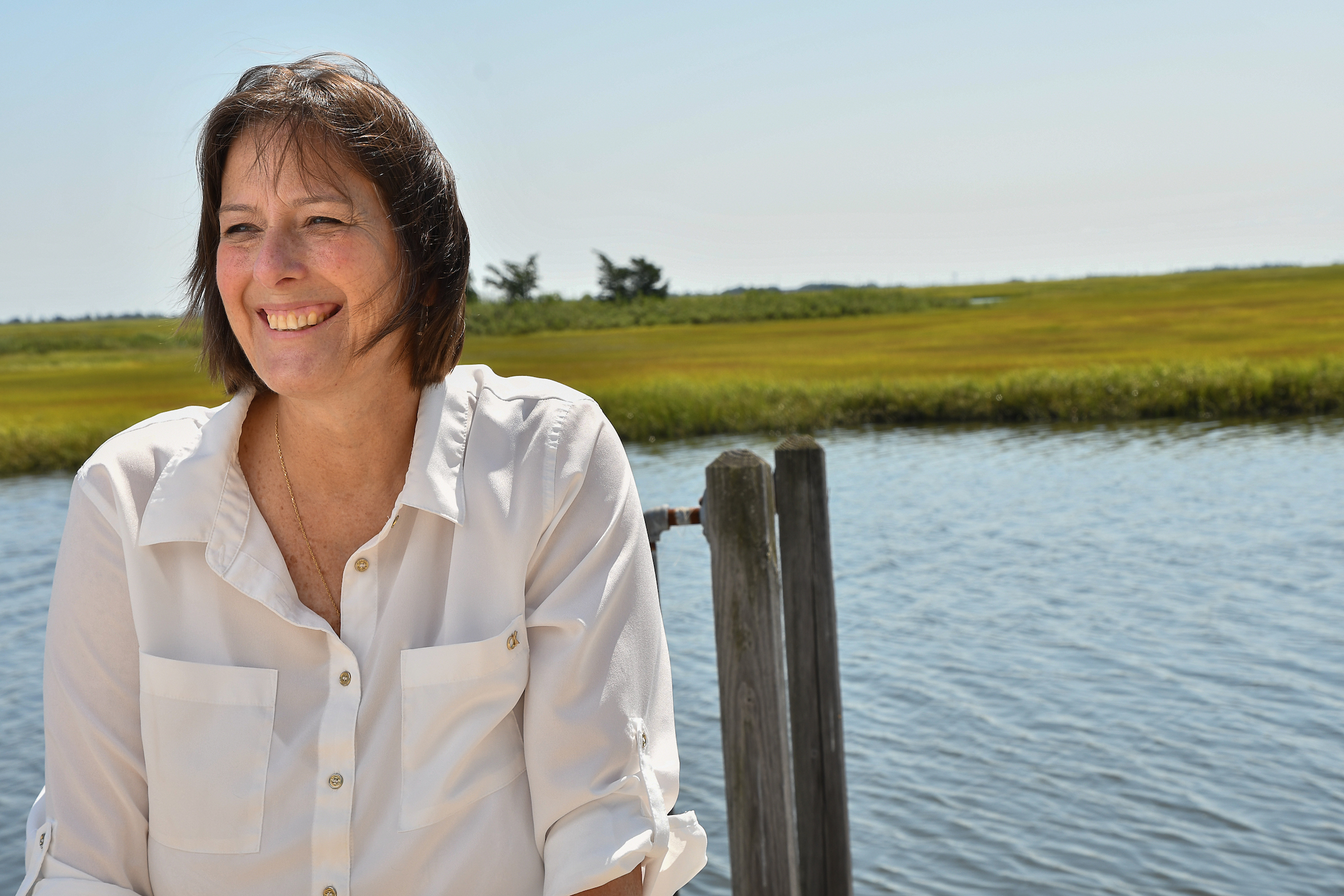By Colleen Forrest

I live on the water in Little Egg Harbor, NJ. My front window looks out on the marsh, and beyond that is the bay. I see higher than high tides; each time it rains, my street floods more often than not. That’s why I’m a leader at NJOP, and part of our Shorekeeper campaign. We are working together to draw the connections between the reality of sea level rise and climate change, mitigating the impacts that we can while we can, and creating a plan to prepare for the rising water that is designed by and owned by the residents.
We can do this right, or we can do this wrong. Right now New Jersey has no plan for the next big storm, and no plan for rising tides caused by climate change. How does that make you feel? Scared? Nervous? Overwhelmed by the thought?
Let’s say you live in an area near the water, an area flush with money, but you see the effects of sea level rise every time it rains or at every high tide- the streets are flooded. The government fixes this by raising the level of the streets, putting in pumps, building sea walls, but your water bill rises to levels you cannot possibly afford due to all of the work being done to mitigate sea level rise.
How would it make you feel to be priced out of the area you have called home for years? Anxious? Saddened?
That’s what residents in are facing in Miami. The poor and middle class are being squeezed out of the area with the rising costs of improvements- what is called “climate gentrification,” and even the wealthy are buying property inland as “insurance.”
And let’s take a look at Atlantic City after Sandy: the homes of the wealthy on the beach and located on the higher elevations of the island have been rebuilt. The poor and many of the middle income are still waiting in a cash-strapped city that doesn’t have the money to improve roads and infrastructure; in a city where the poor and middle income are squeezed out of the job market due to casino shut downs. Foreclosures are epidemic.
How does that make you feel? You watch your wealthy neighbors rebuild their homes but you still wait. Some of your neighbors will never move back due to foreclosure; some have simply give up on the process. Resentful? Bitter? Disgusted?
Those with less access to credit, savings, job re-placement skills, or wealth have a much harder time bouncing back and staying safely in their communities than those with greater resources. Those who can’t afford to rebuild move out, and land on the water is sold to developers who place multi-million dollar homes and vacation homes where middle class and working class families once lived and made a living, and the entire fabric of the community is changed.
Do we want a New Jersey where people like me are pushed out of our communities and lose everything in the process?
I sat with my family and watched the news coverage of Hurricane Harvey this past week. Then, three days after the storm, I knew people would be opening the doors to their homes. I knew the devastation. I knew the fear of not knowing where I will sleep or live, or if I have the resources to start again. I know the feeling- seeing everything you have worked for taken out to the side of the street. The knowledge of the challenges ahead of them moved me to tears.
I want to feel confident. Confidence comes from being proactive instead of reactive and knowing you have a plan that understands the immensity of the challenges of rising tides and rising costs, not only in terms of infrastructure that will be needed to protect a communities, but also in terms of setting equitable social policies that protect all of its people.
That’s what New York is trying to do, they put policies in place to protect all of their communities, no matter what the socioeconomic level. New York’s programs includes coastal affordability as one of its key policy priorities and promises to find ways to elevate as many homes as possible and advocate for NFIP policies that will reduce flood insurance premiums for those who cannot elevate.
Feeling hopeful? So what do we want to do about planning for a future storm in New Jersey?
We know we have to include the work of non-profits, and universities, and organizations such as NJ Futures, which provides communities with assistance in rebuilding, through the use of local recovery planning managers (LRPM’s), helping towns to move people and assets out of harm’s way and leaving them with more resources to prepare for future storms.
We have to continue to study the back bays, and our 3500 miles of coastline to investigate problems and solutions to reduce damages from coastal flooding that affect population, critical infrastructure, critical facilities, and ecosystems.
We need to continue to come together in our communities and foster conversation regarding the future of our individual communities and our state. We need a plan that encourages local coastal towns and cities to work together.
We need to be part of the conversation and a part of that planning. We know we can come together to do this – I have confidence in our communities to hold our elected officials accountable for our future, just like we have for Sandy recovery.

